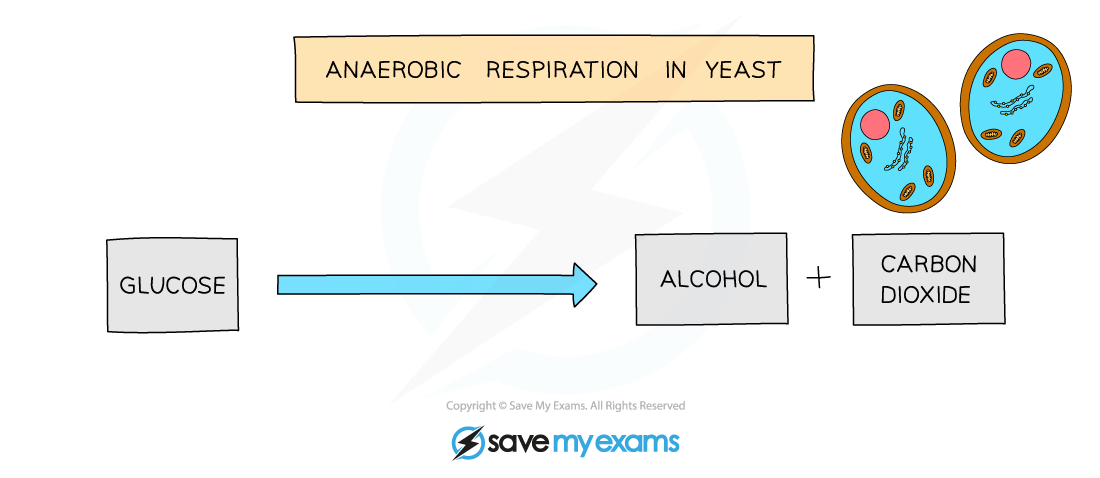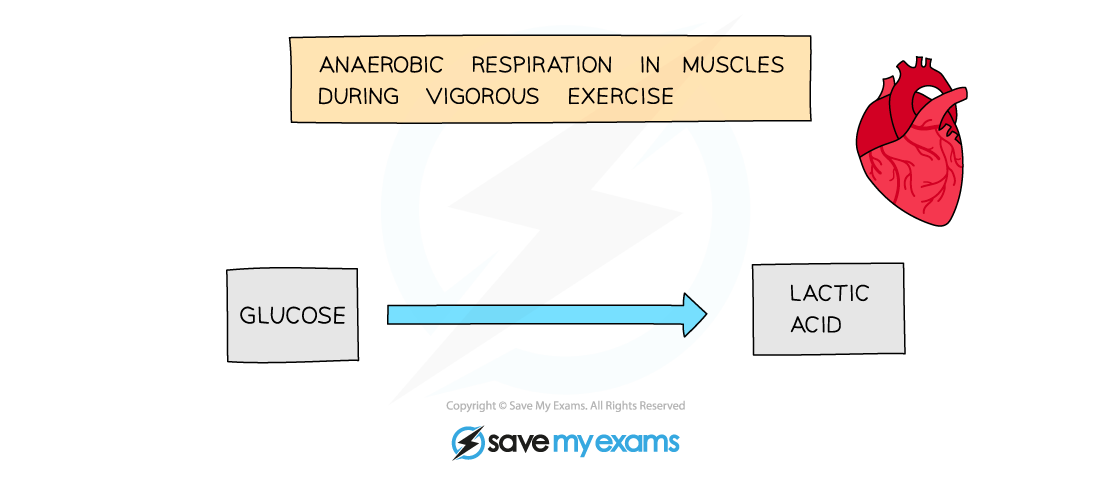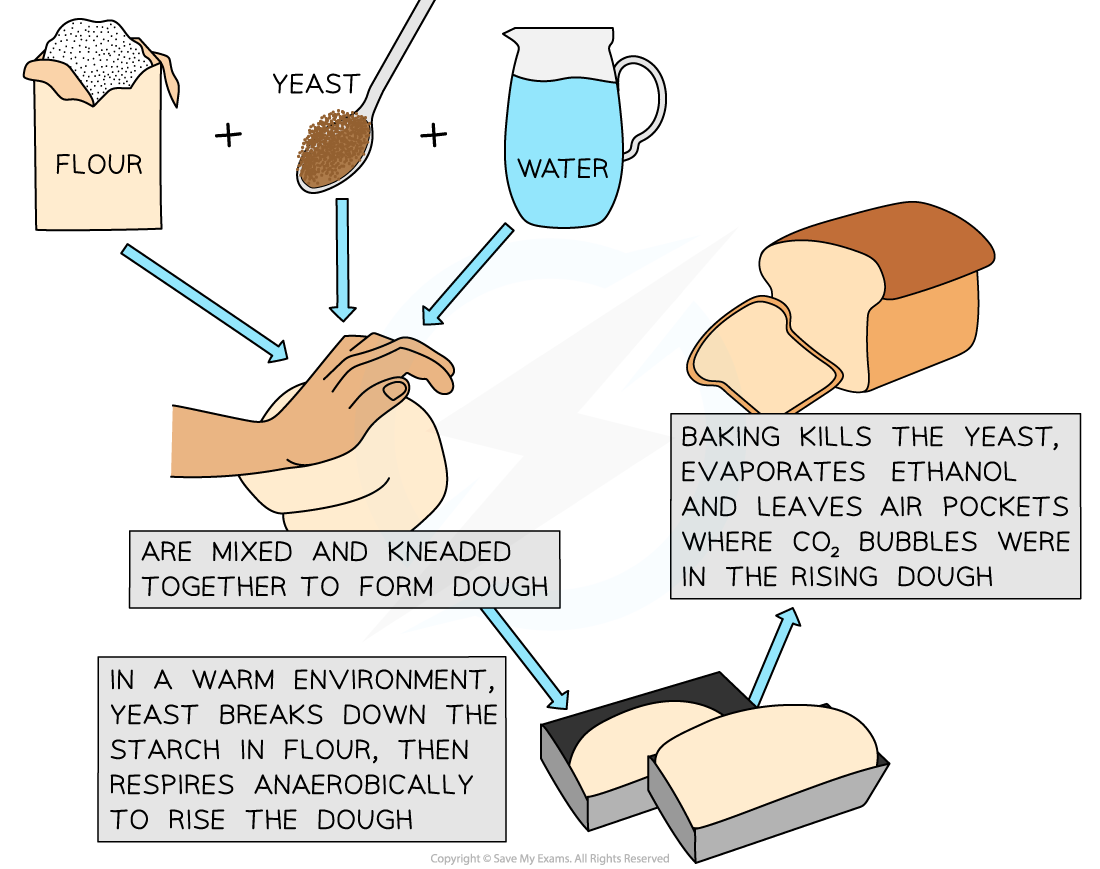Anaerobic Respiration: ATP Yield
- In cells, there is a much lower energy yield from respiration in anaerobic conditions than in aerobic conditions
- There can be different ways in which oxygen becomes unavailable
- When oxygen supply can't keep up with demand in heavily respiring cells
- But a short supply of ATP is still required eg. vigorous exercise requiring a lot of muscle contraction
- When oxygen supply can't keep up with demand in heavily respiring cells
- In conditions where oxygen cannot reach the organisms eg. in waterlogged soil
- The only ATP-producing reaction that continues is the first stage of respiration (around 2 ATP molecules per molecule of glucose)
- This means that around 36 ATP molecules are not produced anaerobically that would otherwise have been produced in the presence of oxygen
- 2 ATP molecules is better than zero ATP molecules, so anaerobic respiration can give a short discharge of energy when oxygen runs out
- Plants and yeasts produce ethanol and CO2
- Animals produce lactate


Anaerobic respiration in yeast produces different products to anaerobic respiration in animals
Anaerobic Respiration: Yeast
- Bakers can make use of anaerobic cell respiration in yeasts to produce ethanol and carbon dioxide in baking
- Yeasts are single-celled fungi that live in areas where sugars are present eg. on fruit or on leaves
- They can respire aerobically or anaerobically
- Flour contains starch, and when mixed with water and yeast can form a bread dough
- The dough is kneaded to mix everything together
- The dough is then left in a warm place to encourage the yeast to respire
- Yeast cells grow rapidly in number while oxygen is still present in the dough
- The yeast hydrolyses the starch into maltose and glucose and respire the sugars, aerobically at first
- The dough soon becomes anaerobic (all the oxygen within it is used up aerobically by the yeast)
- Anaerobic respiration takes over and CO2 bubbles begin to form in the dough
- These bubbles allow the dough to rise (swell up)
- Baking the dough kills the yeast and the bubbles form the fluffy texture of the finished bread
- Ethanol, the other product of anaerobic respiration of yeast, is produced but evaporates during the final baking stage

The role of anaerobic respiration of yeast in breadmaking to cause bread dough to rise
Anaerobic Respiration: Lactate Production
- Animals have evolved a system to provide a short burst of energy in exceptional circumstances
- Anaerobic respiration can help to generate powerful muscle contractions in the short term eg. to escape from a predator or to catch prey
- For humans, anaerobic respiration plays a role in sport and exercise more than in survival
- Glucose is metabolised to lactate when oxygen can't be supplied quickly enough to muscle cells
- Lactate accumulates in those cells and tissues
- Lactate is toxic above a certain level and can cause discomfort and even pain (cramp)
- This limits how long an athlete can perform anaerobically for eg. sprinters, who typically only race over 400 metres or less
- After lactate is produced it has to be broken down aerobically
- The breakdown of lactate needs extra oxygen
- This extra oxygen is referred to as an oxygen debt
- It explains why animals breathe deeper and faster for a period of time after exercise
Exam Tip
You won’t be expected to know the total yield of ATP from each type of respiration in detail but be prepared to explain why anaerobic respiration produces substantially less ATP than aerobic respiration.
